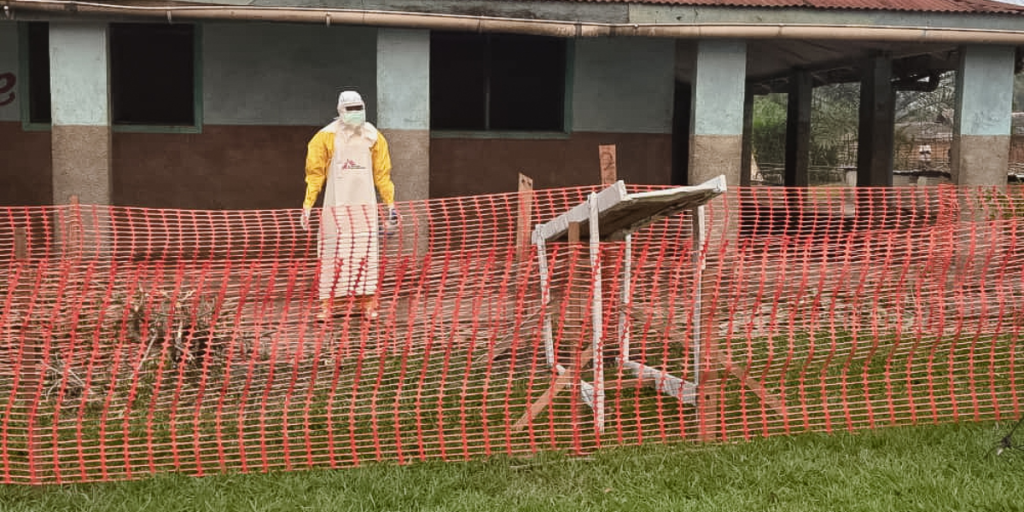Since the Ebola Virus Disease (EVD) epidemic was declared in Bulape (Kasai) on 4 September, Médecins Sans Frontières (MSF) has been supporting the Ministry of Health in its response. From the outset, MSF teams have been treating patients and building treatment and isolation centres. Now that the epidemic appears to be under control, Dr. Maria Mashako, MSF’s medical coordinator in the DRC, reflects on their efforts.
What is the current situation with the epidemic?
Maria Mashako: “More than a month after the epidemic was declared, the situation seems to be under control. Around 50 cases were confirmed within a month, but none have been reported since the end of September. Many suspected cases are detected through the authorities’ surveillance system, but the number of new patients requiring Ebola treatment has dropped. As of 14 October, there was only one confirmed patient at the Bulape treatment centre, along with around 15 ‘suspected’ patients awaiting test results.
There are good reasons to be optimistic at this stage, especially as vaccinations have been carried out in all outbreak areas. With the emergency phase now over, we can begin preparing the handover of activities, so that the remaining care can be managed by other organisations.”

What did MSF do on the ground?
MM: “We focused on providing medical care to patients and setting up treatment and isolation facilities. As soon as the epidemic was confirmed, we sent a team to support Bulape General Referral Hospital, where several patients and healthcare workers had already died from the disease. We urgently strengthened infection control measures, reorganised patient flow, supplied medical equipment and protective gear, and trained staff in prevention and symptomatic care.
In collaboration with the Ministry of Health and the WHO, we also established a temporary Ebola treatment centre on the hospital grounds to accommodate patients outside the hospital.
Unfortunately, many people had already died before the response was fully underway. The arrival of teams on site, the reinforcement of hospital capacity, and the availability of treatments helped reduce the alarming mortality rate. Sadly, more than 40 people lost their lives, including around 30 confirmed cases.
In addition to supporting the hospital and the temporary treatment centre, we built and managed an isolation centre in Mpianga, one of the affected areas of Bulape. We also helped set up a more suitable and efficient treatment centre in Bulape with the WHO and the Ministry of Health. This centre has 32 beds: 16 for confirmed cases and 16 for suspected cases. The first patients were admitted on 10 October under optimal conditions.”
What were the main challenges faced over the past month?
“Logistics have been by far the biggest challenge. Bulape, the epicentre of the epidemic, is extremely remote and difficult to access by road. We had to rely on air transport, particularly helicopters. There were many essential supplies and people to bring in, but few ways to do so. These challenges significantly delayed the rapid deployment of personnel, equipment, vaccines, and treatments. When we arrived, there was a shortage of everything. Just to provide water to the hospital, we had to install 1.5 kilometres of piping. The high number of deaths before our arrival created a sense of panic, with many patients fleeing the hospital.
The first few days of the response were very difficult. Fortunately, once teams from the Ministry of Health, MSF, and WHO were on site, the community mobilised strongly to support the response efforts. Confidence returned, and the patients who had fled came back. The community played a vital role in building the new treatment centre, transporting materials by hand to speed up the construction. Thanks to their active involvement, the centre was completed. Their commitment was truly decisive.”
What should the priorities be now?
“In the short term, all partners involved in the response must continue their activities across the different response pillars, while maintaining heightened vigilance around surveillance, vaccination, case management, contact tracing, and more. What happens at this stage will be crucial in determining the next steps. The good news is that this response effort will leave behind improved local capacity and resources for identifying and responding to Ebola and other epidemic diseases, as well as better-trained staff and more robust contingency plans.
This epidemic also underscores a second crucial priority: strengthening the health system as a whole—not just focusing on virus-specific responses. In the affected area, the immediate priority was rightly to stop the outbreak, but hospitals and health centres continue to struggle with treating common diseases. Experience shows that post-Ebola recovery must involve building a comprehensive health system capable of meeting everyone’s needs during and after an epidemic. Strengthening primary healthcare and making it free of charge must be a central pillar of epidemic response. This outbreak offers a new opportunity to advance in that direction, as advocated by the health authorities. Because alongside these emergency responses, other silent killers remain. For instance, malaria claimed more than 21,000 lives in the DRC in 2024—yet there is currently a shortage of rapid tests and antimalarial drugs.”












